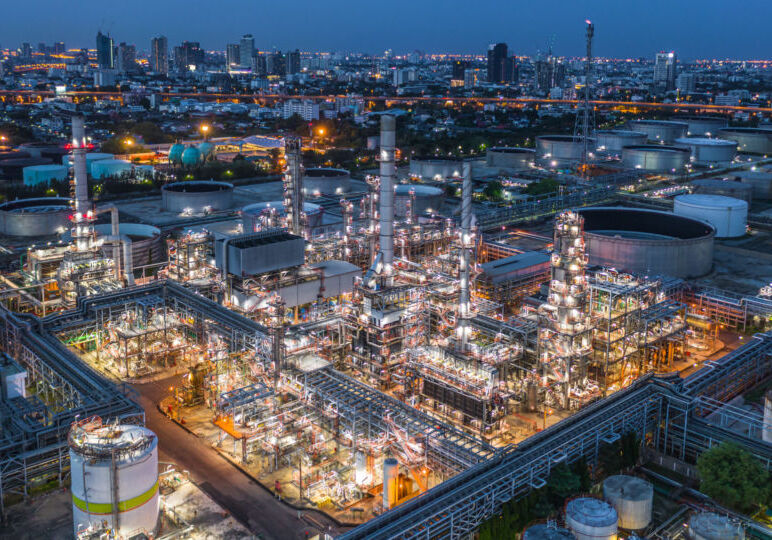Exploring the economic risk, metrics and digital solutions powering the next phase of the Energy Transition

Transition is a familiar friend to the downstream industry. Fluctuating oil and gas prices, geo-political shifts and health and safety risks have helped shape a market, and its workforce, who were used to uncertainly long before the days of the pandemic. As one refinery leader once said, “it’s always been a volatile market. That’s what’s made it fun!”
Yet as economies find their feet after a downturn unprecedented in its severity, transition is taking on a greater significance. Asian Downstream Insights explores how the next phase of the Energy transition could be the determining factor in the sector’s survival, and why green energy goes further than setting sustainability targets.
Low carbon, high risk?
In December last year, major energy companies, BP, Eni, Equinor, Galp, Occidental, Repsol, Royal Dutch Shell and Total agreed and announced six joint principles to drive their participation in the energy transition. The principles, which included public support for Paris Agreement Goals, industry collaboration and decarbonization, were hailed as a “framework for actions leading energy companies are taking together”.
Many of these major operators have also pledged ambitious carbon reduction targets, and are expanding business portfolios to include renewable energy sources. In 2019, Shell made a landmark venture into Southeast Asia, when it became the first fuel retailer to launch electric vehicle charging facilities in Singapore.
But pledges mean nothing without action and with the aftermath of 2020 still lingering, some market analysts are questioning the extent to which executives can continue to focus on longer term priorities such as decarbonization. The sharp economic hit of coronavirus has made operators risk averse to big business change.
And it is not just economic risk holding operators back from full commitment to renewables. Clean energy spin-offs – the next natural step for major oil and gas companies after diversifying into renewables – have been slow to take off, especially in Asia. Even though it is estimated that a spin-off dedicated to renewables could be valued “at 5-6 times higher outside an oil major than inside”, this breakaway could compromise operational synergy with the parent company, and risk detracting away from its original decarbonisation goals. As a report from HSBC suggests:
From targets to action
Energy transition goes further than just revamping your business with renewables. Clear ESG metrics should be incorporated into the existing business strategy, which are measurable, and transparent to investors. Environmental impact should be recognized as a clear business asset and compliance risk.
Sustainability concerns should be ingrained into workforce culture, and in a workforce where as many as 50% of the workforce could retire within the next 5 – 7 years, efforts should be made to ensure the sector is attractive to younger generations of environmentally conscious workers.
Increasingly, new technologies can help bring the sector into the next phase of a sustainable future. When carbon-tracking and reporting is key to operators’ sustainability success, operators are increasingly turning towards IoT sensors, blockchain and AI solutions to provide a clear assessment of their emissions activity. New breakthrough climate accounting technologies which track and verify energy and carbon emissions are fuelling a flourishing carbon management market, set to reach US$ 12.2 billion in worth by 2025.
One emerging leader in this field is engineering solutions company, Ingenero, committed to “enable increased sustainability, efficiency, safety and reliability” through digital solutions and data. As their CEO and Founder, Pratap Nair explained to Asian Downstream Insights:
“Digitally enabled Advanced Analytics allows process manufacturers to have a far wider, deeper and faster insight into sustainability metrics like Carbon Intensity, emission… and other utilities usage and how they can be improved through their core operations itself…driving more agile action on physical assets across different stages of the manufacturing supply-chain, to address sustainability needs”
Transition to transformation
The energy transition is a long game, set to play out across multiple decades and cycles. As an industry CEO told Asian Downstream Insights, “the industry might even have to go through some form of growing pains in the form of increasingly regulated and strict frameworks”.
One such growing pain is operators putting their money where their mouth is. In a recent survey 90% of oil and gas respondents claimed their company has, or is developing a long-term strategy for a sustainable, low carbon future. However, amongst those, low-carbon spend still rarely exceeds 5% of capital budget.
Still, most CEO’s seems to agree that “a valuable energy company in 20 years is not a pure oil and gas company”. BP has made a public pledge to invest US$5 billion in renewables before the end of the decade. Across the industry, a shift in CAPEX of between 30% and 50% toward renewable energy in the next 3 to 5 years is considered possible, although some believe 10 years is a more realistic timeframe.
There is no doubt over the integral role renewables will play in the energy transition. Nor over operator’s commitment to them. What remains in play, is the speed and scale with which they embrace this change. The energy transition is just the journey. It’s the destination that will prove the shape, and success, of a sustainable downstream industry.
Read more:
- Aramco to Acquire 50% Stake in Air Products Qudra’s Blue Hydrogen Industrial Gases Company
- SK Innovation and SK E&S Announce Merger, Forming Asia-Pacific’s Largest Private Energy Company With Assets of KRW 100 Trillion
- Indorama Ventures Secures $200 Million Loan From IFC to Drive Sustainability Program
- Aramco’s Strategic Gas Expansion Progresses With $25bn Contract Awards
- GC CEO Narongsak Jivakanun Reveals Vision to Continue 3 Steps Plus Strategy and Drive Map Ta Phut to Become Southeast Asia Hub